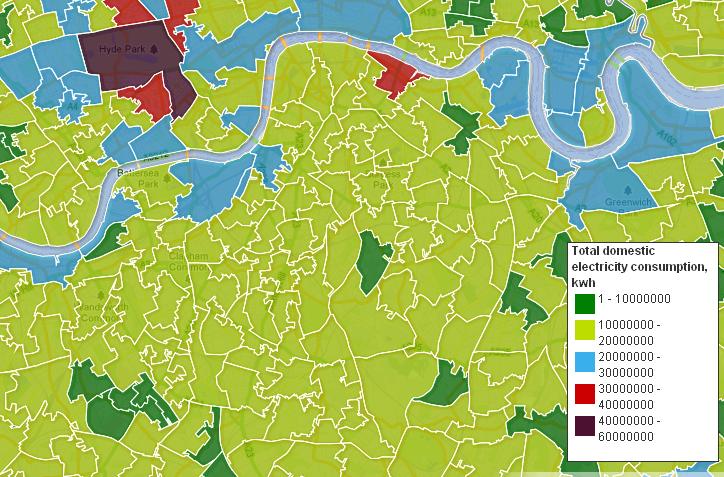Site search:
-
What’s new?
Energy for London Tags
Brent Buildings Camden Carbon Emissions CHP Cities Climate Adaptation Community Heating Community Initiatives Croydon Data DECC Decentralised Energy Distribution ECO Energy Costs Energy Efficiency Enfield FIT Fuel Poverty Funding Green Deal Hackney Haringey Housing Islington Lambeth Library Local Authorities Mayor Newham Ofgem Olympics Photovoltaics Planning RE:FIT RE:NEW Renewable Energy Retrofit Southwark Tower Hamlets Transport Waltham Forest Waste WestminsterEnergy Archives:
- February 2021 (1)
- January 2021 (15)
- December 2020 (15)
- November 2020 (9)
- October 2020 (3)
- August 2020 (5)
- July 2020 (3)
- June 2020 (4)
- April 2020 (10)
- March 2020 (5)
- February 2020 (2)
- January 2020 (3)
- October 2019 (1)
- September 2019 (4)
- August 2019 (2)
- July 2019 (1)
- August 2018 (1)
- November 2016 (8)
- October 2016 (8)
- September 2016 (2)
- August 2016 (8)
- July 2016 (14)
- April 2016 (12)
- March 2016 (16)
- February 2016 (8)
- January 2016 (4)
- December 2015 (1)
- November 2015 (1)
- October 2015 (16)
- September 2015 (3)
- June 2015 (1)
- May 2015 (1)
- April 2015 (1)
- March 2015 (1)
- February 2015 (1)
- January 2015 (1)
- December 2014 (18)
- November 2014 (4)
- August 2014 (8)
- July 2014 (7)
- June 2014 (25)
- May 2014 (8)
- April 2014 (4)
- March 2014 (12)
- February 2014 (7)
- January 2014 (13)
- December 2013 (11)
- November 2013 (15)
- October 2013 (15)
- September 2013 (18)
- August 2013 (5)
- July 2013 (20)
- June 2013 (33)
- May 2013 (8)
- April 2013 (16)
- March 2013 (25)
- February 2013 (14)
- January 2013 (20)
- December 2012 (23)
- November 2012 (23)
- October 2012 (25)
- September 2012 (14)
- July 2012 (12)
- June 2012 (43)
- May 2012 (20)
- April 2012 (8)
- March 2012 (40)
- February 2012 (39)
- January 2012 (40)
- December 2011 (22)
- November 2011 (40)
- October 2011 (33)
- September 2011 (48)
- August 2011 (40)
- July 2011 (58)
- June 2011 (41)
- May 2011 (80)
- April 2011 (38)
- March 2011 (33)
- February 2011 (25)
- January 2011 (24)
- December 2010 (3)
- November 2010 (7)
- October 2010 (6)
- September 2010 (7)
- August 2010 (1)
- July 2010 (2)
- June 2010 (4)
- May 2010 (1)
- March 2010 (3)
- February 2010 (3)
- December 2009 (5)
- November 2009 (2)
- October 2009 (3)
- July 2009 (3)
- June 2009 (1)
- April 2009 (1)
- March 2009 (1)
- February 2009 (1)
- January 2009 (1)
- December 2008 (2)
- October 2008 (1)
- September 2008 (1)
- July 2008 (1)
- March 2008 (2)
- January 2008 (2)
- October 2007 (1)
- September 2007 (3)
- July 2007 (1)
- March 2007 (1)
- February 2007 (3)
- November 2006 (3)
- August 2006 (1)
- February 2006 (1)
- May 2005 (1)
- February 2004 (1)
Monthly Archives: April 2012
Brent Schools and Climate Change Conference
April 2012: Members of Brent Campaign Against Climate Change and Brent Council officers are organising a schools climate change conference to take place in the Summer. It will be aimed at 6th formers and FE students with a separate workshop for primary teachers in the afternoon. Further information here.
London Arts Theatres start energy collective purchasing deal
20 April 2012: Regular energy for london read, The Stage, has highlighted how the “National Theatre, the Royal Opera House and the Royal Albert Hall have clubbed together to form an energy-buying collective that will enable them to purchase electricity at lower rates. The scheme, called Arts Basket, is being run by energy consultancy Power Efficiency. The group is also inviting other theatres and arts venues to join the initiative.“ Read the full article here. Further information on the Arts Basket – which is an initiative launched by Balfour Beatty company Power Efficiency – can be found here.
Renewable Heat Grant Statistics
19 April 2012: The Government’s Renewable Heat Premium Payment (RHPP) scheme operates for a limited period prior to the introduction of the Renewable Heat Incentive (RHI) – and provides money to householders to help buy renewable heating technologies – solar thermal panels, heat pumps and biomass boilers.
For solar thermal products, any householder in England, Scotland and Wales can apply – hence the grants are applicable to Londoners. However, for ground to water, air to water or water to water heat pumps, and for biomass boilers, householders without gas central heating in England, Scotland and Wales can apply (in other words those who are not connected to the gas grid and currently rely on fuels such as oil, liquid gas, solid fuel or electricity for their heating).
The Energy Saving Trust (EST) manages the scheme and have just produced statistics showing the installation of Renewable Heat Premium Payment technologies by region. A total of 74 installations were installed in London out of a total of 5,369 installations across England, Scotland and Wales (just over 1%). The breakdown in London is as follows:
- Air Source Heat Pump – 21
- Ground or Water Source Heat Pump – 2
- Solar Thermal – 51
Put the over-75s on lowest energy tariff, urge Tower Hamlets councillors
April 2012: From the East London Advertiser “Eight-out-of-10 pensioners in London’s deprived East End are paying too much for their gas and electricity, according to Tower Hamlets councillors. Now Labour members on the council are backing a national campaign for companies to put those over 75 on the cheapest tariff—by law.
“Cllr Rachael Saunders, Labour’s Adult Care spokesperson, said: “It’s no surprise that 80 per cent are paying over the odds with 400 tariffs on offer. “This rip-off must end—the big energy companies must make sure those over 75 are on the cheapest deal.” Nearly 8,000 in Tower Hamlets are paying £200 a year more than they need to, according to estimates. Labour is calling on the Government to legislate for energy companies to put the over-75s on the lowest tariff automatically.”
Vauxhall Nine Elms Battersea Energy Strategy
 April 2012: A planning framework for the Vauxhall / Nine Elms / Battersea Opportunity Area has been finalised and is being adopted as Supplementary Planning Guidance to the London Plan. The OAPF has been produced by the GLA in collaboration with Lambeth and Wandsworth councils, as well as TfL and English Heritage and followed a public consultation process that took place in the winter of 2009/10.
April 2012: A planning framework for the Vauxhall / Nine Elms / Battersea Opportunity Area has been finalised and is being adopted as Supplementary Planning Guidance to the London Plan. The OAPF has been produced by the GLA in collaboration with Lambeth and Wandsworth councils, as well as TfL and English Heritage and followed a public consultation process that took place in the winter of 2009/10.
The framework sets out an ambition for around 16,000 new homes and a range of 20,000 – 25,0000 jobs and includes the creation of a Combined Cooling and Heat Power network. The technical appendices to the planning framework includes a Energy Strategy Masterplan (TA5) which states that “this report finds that the density and diversity of development in the Vauxhall Nine Elms Battersea (VNEB) Opportunity Area (OA) supports a strong case for the development of a low carbon district heating network (DHN). The scheme would supply low carbon heat to developments in the heart of Nine Elms, Battersea Power Station (BPS) and the New Covent Garden Market (NCGM) initially, with the potential to expand north into Albert Embankment and to the more industrial areas of the OA to the west in the future. It is estimated that such a scheme could save in the order of 18,000 tonnes CO2 per annum, with heat being derived from a combination of low/zero carbon sources,including combined heat and power (CHP) plant burning a blend of natural and renewable biogas and heat from a biomass hot water boiler.” Further detail and download energy appendix here.
Posted in Library, News
Tagged CHP, Community Heating, Decentralised Energy, Lambeth, Wandsworth
Leave a comment
Domestic Electricity use map of Britain
2 April 2012: The Guardian has utilised the data released by DECC last week to produce this map of domestic electricity consumption across the UK.
The map can be accessed on the Guardian’s datablog website
DECC release Local Authority Level Energy Statistics
March 2012: DECC have just released their latest breakdown of national energy statistics broken down to the i. local authority level, and also sub local authority level via datasets at ii. Middle Layer Super Output Areas and iii. Lower Level Super Output Areas. All datasets linked below are in Excel and can be downloaded from DECC’s website here. Direct links to the datasets are also available below.
Sub-national authority electricity consumption statistics 2005 to 2010
Time series of data for 2005-2010 of electricity consumption of all London boroughs, including average electricity consumption per borough (both domestic and non-domestic) and number of meters per borough. Note – the spreadsheet shows that the London average domestic electricity consumption at 3,988kWh is just below the UK average of 4,148kWh
Middle Layer Super Output Area (MLSOA) domestic electricity estimates 2010
All London boroughs represented, with domestic electricity consumption for 2010 only broken down to around 30 MLSOA (Middle Layer Super Output Areas) for each borough.
Middle Layer Super Output Area (MLSOA) non-domestic electricity estimates 2010
Similar to above, but with average electricity consumption at the MLSOA level for non-domestic energy users.
Middle Layer Super Output Area (MLSOA) domestic gas estimates 2010
Middle Layer Super Output Area (MLSOA) non-domestic gas estimates 2010
Middle Layer Super Output Area (MLSOA) domestic electricity estimates 2010: Look-up spreadsheets
Middle Layer Super Output Area (MLSOA) domestic gas estimates 2010: Look-up spreadsheets
Middle Layer Super Output Area (MLSOA) non-domestic gas estimates 2010: Look-up spreadsheets
Lower Layer Super Output Area (LLSOA) domestic electricity estimates 2010
Finer resolution at the LLSOA with boroughs divided down to 100+ areas
Lower Layer Super Output Area (LLSOA) domestic gas estimates 2010
Lower Layer Super Output Area (LLSOA) domestic electricity estimates 2010: Look-up spreadsheets
Lower Layer Super Output Area (LLSOA) domestic gas estimates 2010: Look-up spreadsheets
There are also a number of articles in the latest issue of DECC’s Energy Trends which provides some background and summaries of the outputs of these datasets.
Sub-national electricity consumption statistics and household energy distribution analysis for 2010
Gas and electricity consumption data below Local Authority level
Identifying local areas with higher than expected domestic gas use
Domestic energy bills in 2011
Posted in News
Leave a comment
Croydon Zero Carbon Homes research
April 2012: Tenants in Croydon are to take part in a research project, being undertaken by Sheffield Hallam University, to show how residents are responding to new zero carbon energy alternatives such as renewable house-based energy, high insulation and air proofing, and district heating and biomass fuel. The research will also will also quiz landlords and housing associations to provide a full picture of how the UK’s housing market is facing up to the challenge of zero carbon homes by 2016. Read further details here.


